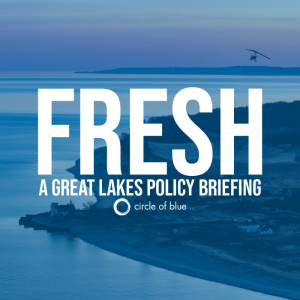Federal Water Tap, January 8: EPA River Survey Notes Ecosystem Improvements, Challenges Nationally
The Rundown
- EPA river and stream survey indicates slightly healthier waters, but nutrient pollution remains a top challenge, especially in the Corn Belt.
- EPA approves Louisiana’s request to manage carbon dioxide injection wells in the state.
- Saltwater in the Mississippi River continues to burden one Louisiana delta town.
And lastly, congressional representatives weigh in on local water issues.
“Mr. Speaker, we know that oil and water don’t mix.” – Rep. Rashida Tlaib (D-MI) speaking on the House floor about the Line 5 oil pipeline that crosses the Straits of Mackinac, which separate lakes Michigan and Huron. Tlaib, who opposes the continued operation of the pipeline, called for President Biden to revoke its permit.
“The state should not continue spending hundreds of millions of tax-payer dollars in pursuit of a multibillion-dollar boondoggle.” – Rep. John Garamendi (D-CA), in a written statement opposing Gov. Newsom’s approval of a contentious water-supply tunnel beneath the Sacramento-San Joaquin delta.
By the Numbers
$600 Million: The EPA selected 11 regional organizations that will act as matchmakers, distributing those dollars to disadvantaged communities for environmental projects.
News Briefs
Louisiana Carbon Dioxide Injection Wells
The EPA granted Louisiana the authority to manage carbon dioxide injection wells in the state.
Under the Safe Drinking Water Act, the agency can delegate permitting and enforcement duties for underground injection wells to state bodies. Authority is granted so long as the state promises to protect drinking water sources from contamination.
Mississippi River Saltwater Wedge
Despite more favorable flow conditions, one location in the Louisiana delta is still contending with elevated salt levels in the Mississippi River.
Boothville is the only town in the Army Corps of Engineers’ 28-day forecast where salt levels exceed health advisories. An underwater dam and stronger river flows in recent weeks have prevented the saltwater wedge from moving upstream.
Studies and Reports
River Health
The EPA published its third national assessment of river and stream health, finding in the survey that streams are improving in certain ways but are still challenged in others.
First, the good. River miles with healthy fish populations increased by 10 percentage points. Fewer stream miles exceeded standards for enterococci bacteria, an indicator of fecal waste.
Still, there is work to do. Though fish were doing better in more river miles, only 35 percent of river miles are rated in good condition for fish. Even fewer streams rated well for invertebrates (worms, snails, dragonfly larvae).
Nutrients – from farm fertilizers and manure, but also sewage, septic systems, coal burning, and lawns – continue to be the most widespread water contaminant. More river miles are rated in poor condition for nitrogen and phosphorus than in good condition.
The two nutrients seem to be on diverging paths. Nitrogen displayed no significant national change, though in the Corn Belt states, nitrogen-impaired rivers increased. (To see regional trends, go here.)
Phosphorus, by contrast, is in retreat. The survey indicated significant national reductions in phosphorus-impaired rivers. The number of river miles in poor condition declined by 17 percentage points. A trend or natural variation? The next survey will provide more clarity.
Do not, however, expect an answer soon. These are not up-to-the-minute results. The current survey is based on data collected in 2018 and 2019.
On the Radar
Lead and Copper Rule Public Hearing
On January 16, the EPA will host a public hearing for a proposal that, among other provisions, would require most utilities to remove lead drinking water pipes within 10 years.
Register for the online meeting here. It is scheduled to run from 11:00 a.m. to 7:00 p.m. Eastern.
Sewer Overflow and Stormwater Grants Program Audit
The EPA Office of the Inspector General will audit the agency’s sewer overflow and stormwater grants program, checking to see how well it is managed.
Federal Water Tap is a weekly digest spotting trends in U.S. government water policy. To get more water news, follow Circle of Blue on Twitter and sign up for our newsletter.
Brett writes about agriculture, energy, infrastructure, and the politics and economics of water in the United States. He also writes the Federal Water Tap, Circle of Blue’s weekly digest of U.S. government water news. He is the winner of two Society of Environmental Journalists reporting awards, one of the top honors in American environmental journalism: first place for explanatory reporting for a series on septic system pollution in the United States(2016) and third place for beat reporting in a small market (2014). He received the Sierra Club’s Distinguished Service Award in 2018. Brett lives in Seattle, where he hikes the mountains and bakes pies. Contact Brett Walton







Leave a Reply
Want to join the discussion?Feel free to contribute!